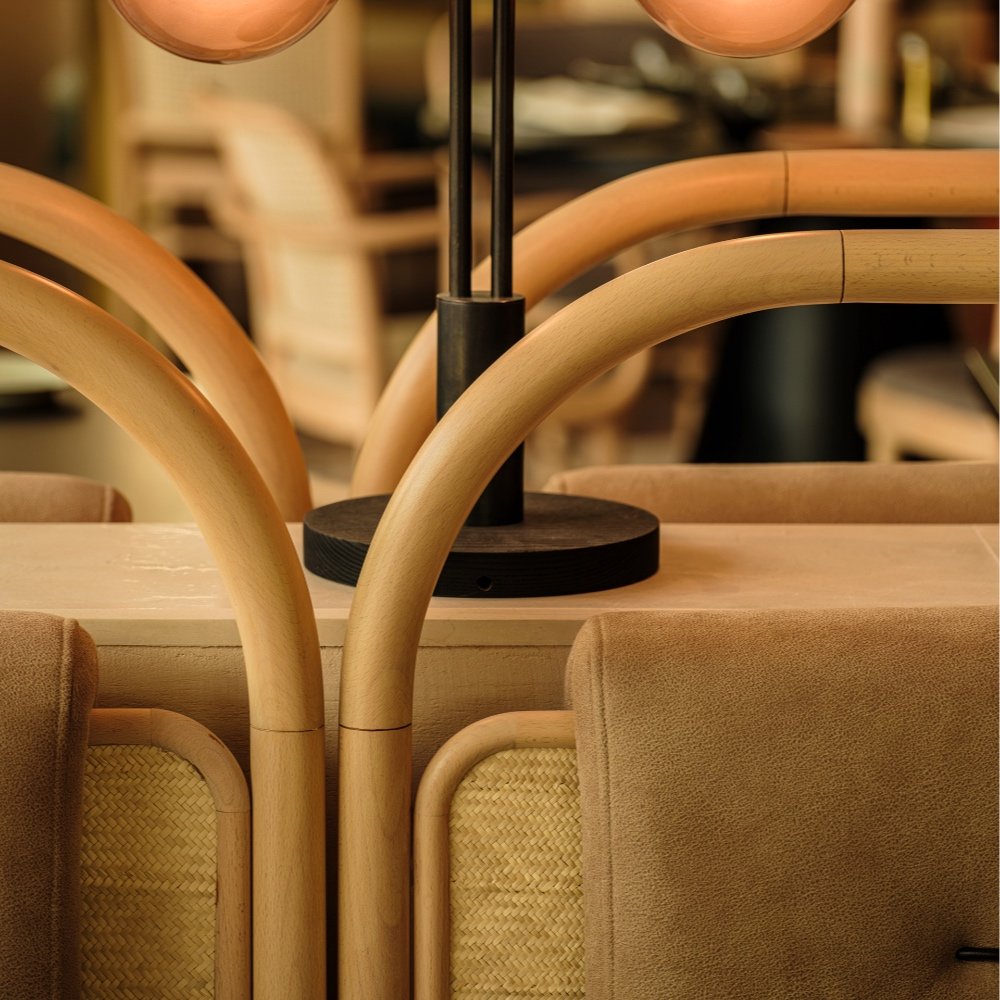From bed spreads to wall hangings to large installations, we are passionate about working together to find creative ways to integrate our textiles into your projects.

Traceable Natural Fabrics from Uganda
Each textile in our collection tells a story interwoven with the vibrant ecosystems of Uganda. From the barkcloth of the mutuba tree carefully harvested during the nourishing rainy seasons, to the enkindukindu palm fronds that are meticulously collected and plaited to create exquisite plaited structures.
In our collection, we embrace nature as our collaborator, relying on her to supply the raw materials that come together to form each unique textile. This harmonious relationship ensures that every piece bears the unique hallmarks of its natural origins – nuances in color, texture, and surface that echo the diversity of Uganda’s ecosystems.

The mutuba tree gives its bark once a year, each piece has a unique color resulting from the combination of rainfall, sun, and harvest time.
THE RICH HISTORY AND FASCINATING STORIES OF OUR RAW MATERIALS
Barkcloth
Ugandan bark cloth, Lubugo, is a complex and beautiful material. The Buganda people of Uganda have been creating this cloth from trees for hundreds of years. It was originally used for clothing, bedding, around the home, and since has evolved to signify the identity of the Buganda, being worn by the Kabaka (king) for ceremonial occasions - this is why it has been referred to as a cloth for kings! It is a sustainable cloth (the tree grows it bark back year after year!) and many Ugandan artists and designers are using this in their contemporary practice.
Our partners in Uganda, the Bukomansimbi Organic Tree Farmers Association, ensure each cloth benefits the producer and the environment. They train new makers and are committed to replanting trees for future generations. Led by award winning 9th generation maker, Paul Katamiira, he and his sons are experts in the field of barkcloth. They are attuned to every detail of making cloth from trees - from when to harvest, the qualities of the sub-species, and how to make the most beautiful cloth.
We also love our naturally dyed BLACK bark cloth - sustainably sourced and dyed, and traceable to the maker!
Plaited Palm
Plaited palm leaf has been a part of the textiles of Uganda for generations. Artisans hand-weave complex patterns in an array of designs, creating sheets of plaited palm sourced from the enkindukindu tree. Through a process of drying, splitting, dyeing, and weaving long bands of the palm, various surfaces and textures are created.
Our studio partner in Bisanje, Uganda is Florence Nakachwa, a beautiful force of nature. Her mother taught her and many other women in their village this intricate and artistic craft. Through her mat weaving work with other women in the community, Florence has created a small enterprise, and has been able to educate all 9 of her children and build her home.
As masters of their craft, she and her team have specialized in plaited palm leaf mat making for decades and continue to work with generational techniques that use complex weaving patterns to create intricate designs.
Woven Indigenous Fibers
The practice of weaving on floor looms was brought to Uganda in the 1970s from Europe. Large 4 harness looms are found throughout Uganda, producing beautifully woven cottons and fibers that create complex surfaces and cloths.
Our partner is entrepreneur Grace Kirabo of TEXDA and her weaving and tailoring team from Kampala, Uganda. Grace launched TEXDA in 1999 to bring the beauty of handloomed weaving to Uganda. As a businesswoman and entrepreneur, she has make a career of working on both small and large projects using locally sourced materials for a variety of hand produced textiles.
Grace and her team of weaving speciliasts have worked tirelessly with us to create our bespoke fabrics. Their attention to detail on each piece has allowed us to offer unique material combinations of locally sourced indigenous fibers.
All woven patterns have been developed by Mekeka Designs using only indigenous fibers and materials in the weft.
























